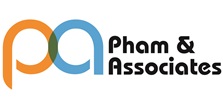
NEW GUIDES ON PROCEDURES FOR THE ACQUISITION OF PATENT RIGHTS
Certification of original documents
Documents such as Power of Attorney or Deed of Assignment from the author(s) to the applicant no longer need to be notarized by a Notary Public. Where the applicant is an individual, the documents simply need to be signed by him. Where the applicant is an entity, the documents need to be signed by an authorized officer of such entity and affixed with its seal (if any) [Art. 2.2(1)]. It is possible for the applicant to certify that a document attached to the application is a true copy of the original [Art. 2.2(2)].
Filing Requirements
Where the application claims priority, the priority application is no longer required to be translated into Vietnamese except in certain instances as required by the National Office of Industrial Property (“NOIP”) [Art. 5.5(3)].
A document evidencing the applicant’s legal right to file a patent application is no longer required to be submitted (except in cases of doubt by the NOIP).
Examination and amendments of applications
The period for examination as to form has been reduced from 3 months to 1 month (Art. 16.1).
If there is a reasonable excuse, it is possible for an applicant or any third party to make a late filing of a request for a substantive examination of a patent application, although this cannot be made later than 6 months from the expiry date of the 42 month period calculated from the priority date of the patent application (Art. 21.1).
In addition to examination fees, payment of a search fee is now required (Art. 21.1).
The period for substantive examination is now shortened from 18 months to 12 months calculated (i) from the date of receipt of the examination demand (if it is filed after the publication date of the patent application) or (ii) from the application publication date (if the examination request is filed before the application publication date) (Art. 30).
It is now possible for the applicant to make amendments to the filed application at any time during the period between the filing date of the application and the date before the NOIP issues a decision on granting a patent (previously, the applicant was only allowed to make amendments to the filed application during the period of substantive examination of the application) (Art. 31.1).
With respect to PCT applications, it is now possible for applicants to make amendments to the applications during the entry Vietnam National Phase. The applicants are allowed to amend or supplement the patent specifications even on the date of entrance into the Vietnam National Phase (Art. 61).
Contents of the amendments shall not extend beyond what has been disclosed in the patent specifications (rather than what has been disclosed in the patent claims) (Art. 31.2).
It is possible to file one request for amendment to one or more patent applications or patents (Art. 68).
Maintenance of the validity of patents
The annuity fee is calculated from the date of granting patent (rather than from the filing date of the patent application as previously provided). In the case where the last year of validity of the patent is not entirely 12 months, the annuity fee is calculated based on the actual months of validity of the patent. In such case, the actual amount of the annuity fee is equal to the annuity fee of one year multiplied by the ratio of the actual months of validity to 12 (Art. 71).
Restoration of a patent
In the case where the validity of a patent is suspended due to the non-payment of the required annuity fees, within 6 months but not later than 12 months from the due date, and where there is no request to invalidate such patent by a third party, it is possible for the patent owner to recover the validity of the suspended patent subject to payment of a surcharge and the unpaid annuity fees. Any third party who has started to exploit the patent during the suspended period shall have the right equivalent to the prior user’s rights. This provision was previously not stipulated in Circular 3055.


